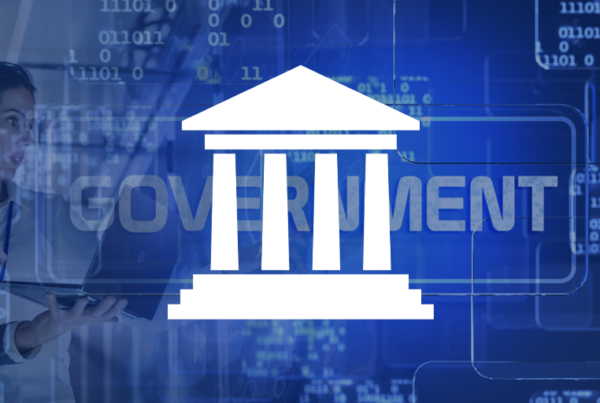Rational Choice Theory Applied to the Modern Digital Economy
Understanding the Implications of Rational Choice Theory in the Age of Democratized IT
Rational choice theory assumes that aggregate social behavior results from the behavior of individual actors making individual decisions. Finding commonalities between the behavior of the modern tech user and established social and economic behavior models, we apply the principles of rational choice theory to today’s digital economy.
Rational choice theory focuses on the determinants of individual choices, stressing the significance of individual actors and the choices they make on the resultant aggregate social behavior. Thus far, it has formally been used to model social and economic behavior. Now we explore how its central concepts can be applied to our modern digital economy, particularly how individuals go about choosing from many similar options in today’s oversaturated app marketplace.
Rational Choice Theory and Today’s Digital Economy
As tech consumers, we have plenty of choices today, with a plethora of applications in the marketplace to choose from. Meanwhile, developers continue to slightly modify, repackage and resell existing applications, adding to the already available choices. For instance, many different apps offer the same basic instant messaging function. Some people choose one messaging app over another, while others use many different ones simultaneously. Similarly, people have many options among social media, email, entertainment and productivity apps. With so many apps to choose from, one of three basic scenarios unfolds.
- A user will prefer one particular application over another.
- A user will choose a combination of different applications to perform the same function.
- A user will choose not to use any of the available applications.
Which of these occurs is largely determined by personal preference. Rational choice theory makes two technical assumptions about individuals’ preferences for one option over its alternatives.
- Completeness of choices: The individual can always state which of the two alternatives they consider preferable or that neither is preferred over the other.
- Transitivity: If option A is preferred over option B and option B is preferred over option C, then option A is preferred over C.
Completeness indicates that among the alternatives, any two can be compared with each other. This means a user must not refuse comparison between alternative choices. So, if I were to choose to hail a cab from a taxi stand and not use Uber or Lyft, the set of alternatives are spread between both traditional and digital services. An important point to consider is that the balance between traditional and tech-enabled choices is shifting as more and more businesses adopt technology. The democratization of IT has made technology-enabled solutions available to wider audiences. As information technology is making even the most traditional services more accessible and convenient, traditional businesses are embracing it to avoid perishing. Because of this trend, the range of choices available to individuals are increasingly digital.
Rational Choice Theory and Objectives
From a range of alternatives, what mainly determines an individual’s choice is their particular objective. Among the limitations of rational choice theory, a critical one is that the sources of objectives are not considered. This point is critical, because objectives are key for end users of digital technology. For a user to consider a given option among various alternatives, there must first be an objective to accomplish. This objective will then determine a user’s choice. Because of this, the concept of transitivity may not hold entirely true for technology users and can at best be taken in a generalized sense. For example, if someone prefers Gmail over Hotmail, and Hotmail over Yahoo mail, the conclusion that Gmail is preferred over Yahoo mail may not always be true. The preference may—or most certainly will—vary according to the objective, since users choose the best alternatives according to both their personal preferences and the constraints facing them in pursuit of their objective.
For example, I prefer Gmail for my banking, billing, insurance, memberships and subscriptions, Hotmail for academic or professional networks and Yahoo for my personal emails and social media accounts. My objective in each of these scenarios is different. In this case, the costs and benefits involved in my choice are not monetary, given that all of these email services are free. Instead my choice of a certain alternative over another for particular functions may simply result from my intent to maximize personal convenience, a priority which I cannot really explain in terms of rationality as it is understood within rational choice theory.
Yes, it may be somewhat rational for me to choose WhatsApp to interact with friends and Skype to communicate with work colleagues since the objectives can be easily distinguished (socializing versus work). However, it is not purely rational to choose Skype to chat, Outlook to email and Google Drive to share files when the objective is the same in all three cases—to communicate for work—and all three alternatives are capable of offering the same functionality. This challenges the idea of rational choice and demonstrates how that paradigm may not necessarily suffice to account for all aspects of choice.
Preferences Classified
Rational choice theory classifies preferences between two alternatives as either strict preference, weak preference or indifference. To illustrate:
- Strict preference is represented by my preference for Amazon over eBay, not viewing Amazon and eBay as equally preferred.
- Weak preference is represented by my preference for Amazon over eBay, although I will readily use eBay if am unable to find what I am looking for on Amazon.
- Indifference would be if I prefer neither Amazon nor eBay over the other.
Again, this classification of preferences cannot be generalized but rather regarded as an approximation. Moreover, there are additional assumptions and probabilities impacting preferences, such as the availability of information about alternative choices, expected utility and limited cognitive ability among many others.
Bounded Rationality
According to Wikipedia, “Bounded rationality is the idea that the rationality of individuals making decisions is limited by the information available to them, the cognitive limitations of their minds, and the time available to make the decision. Decision-makers in this view act as satisficers who can only seek a satisfactory solution, lacking the ability and resources to arrive at the optimal one.”
When I use an engine to search for a service or product, like many people I limit my attention to the top few results. This is what compels businesses to optimize their websites, products and services to appear at the top of the list of results in search engines. However, as suggested by bounded rationality, considering only the top few results will limit my decision-making. There is an important observation to make about the technology landscape here. If individuals are inclined to remain content with only a satisfactory solution given the lack of ability and resources to arrive at the optimal one, then perhaps the growing number of largely identical apps on the market is leading consumers to increasingly settle for satisfactory software solutions rather than optimal ones.
This does not mean that a user should not have the choice between Dropbox and Google Drive, for example, but if the fundamental function that many of these modern apps provide is the same, why should users have to go through different channels, interfaces, log-ins and passwords to access the information they want? Despite these barriers, I continue to use a combination of different apps because one app does something well that the others don’t, and none of them individually offers every feature I need, nor do they all integrate well with existing systems. So, I continually switch apps depending on my momentary needs.
The Impact of Individual Choices on the Overall Digital Economy
As individuals operate in a crowded digital economy, with individual as well as collective objectives, the resultant aggregate social behavior is becoming increasingly complex. There is a plethora of software applications to choose from, and because most applications with the same basic function are slightly altered variants of one another with, at best, incremental improvements, there is in actuality very little difference between alternative choices. This makes it harder to explain rationally what prompts individuals to choose one alternative over another.
From the perspective of businesses and service providers, in order to reach the target audience, marketers position their offerings across multiple social media channels, build custom apps for different devices and operating systems and so on. This is characteristic of the growing phenomenon of consumerization of IT, but it is creating a highly fragmented and disintegrated digital paradigm. Every day new startup businesses release barely improved variants of existing software while large businesses try to keep customers within the perimeters of their walled gardens to maximize profits. As long as users remain restricted by bounded rationality in an oversaturated marketplace, increasingly conditioned to accept less than optimal solutions, the digital economy will continue to grow stagnant.






















